|
Advertisement / Annons: |
Tutorial:
|
Content: |
6: Alternative light source, RGB LED bulbAre there other sources of light that can be used? RGB LED bulb: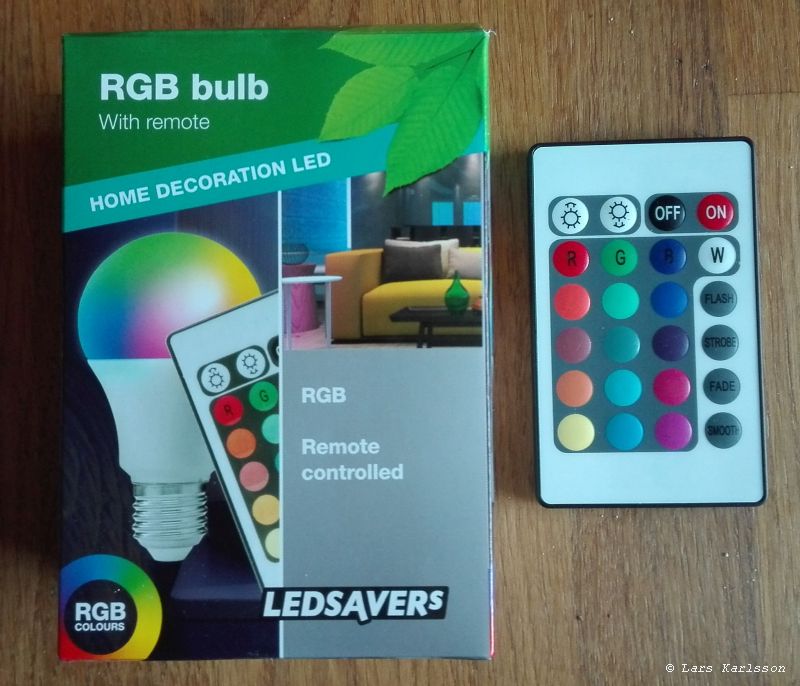
I bought this simple RGB LED bulb. Included is a remote control by which you can control the color. 
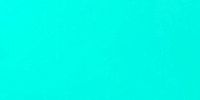
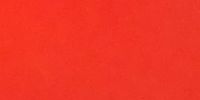
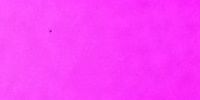
Test photos of four different settings, the step between different settings are a bit rough, I will test it later if it can be used as a flat calibration source. But first I have to built a diffusor to it to get even light. 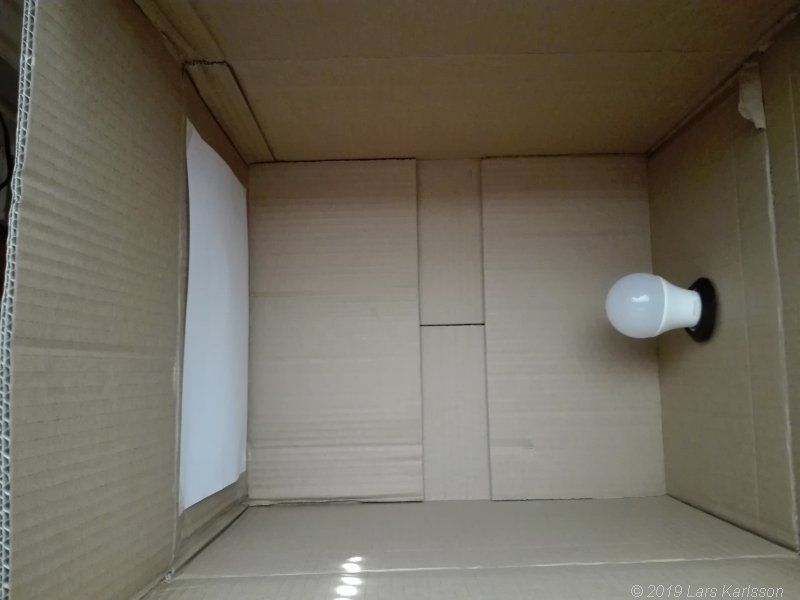
Here is a test light box I mounted the RGB Led lamp into, on the left side is the diffuser. Note, you can only enclosure low power lamps into a box like this, otherwise it could get up in fire. If it works I make a new better light box with white walls that reflect the light better and get it more even, maybe add one more diffuser separated 5 cm from the other. 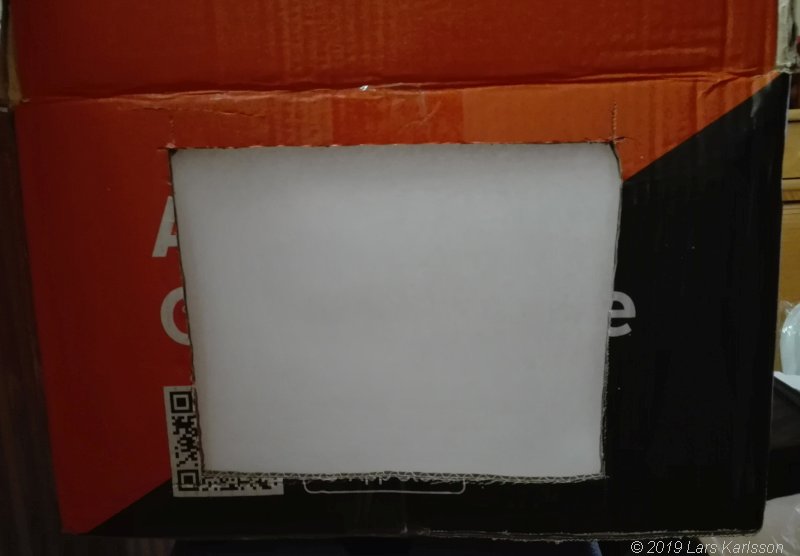
The front with the diffuser, here I point the telescope, as close I can get it. But his can cause some problem with reflections from the lens back to the diffuser, if you have a longer distance it reduce the problem but then the diffuser must be bigger also. I use a paper sheet as diffuser which reduce the reflections, a glass plate is much worse. The room must be in dark, you don't want any other light hit the diffuser. 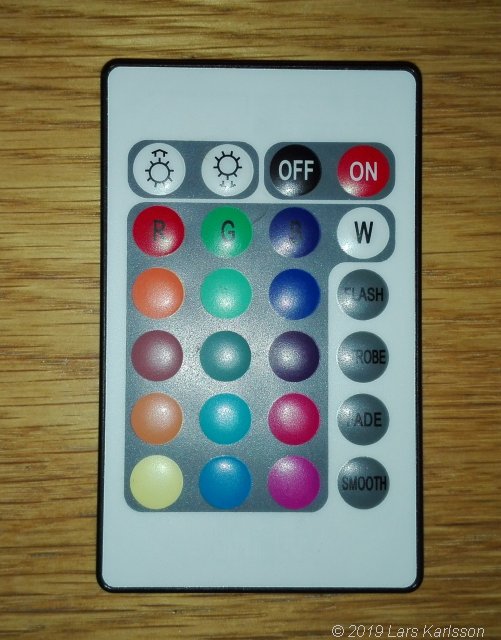
The color setting of the LED bulb is set from the remote control. Even if the LED bulb lamp is in the box it's enough to point the remote towards the diffuser. One big problem, there are not independent control of each color, they depend on each other and it's impossible to get the correct color balance when using a DSLR RGB camera. 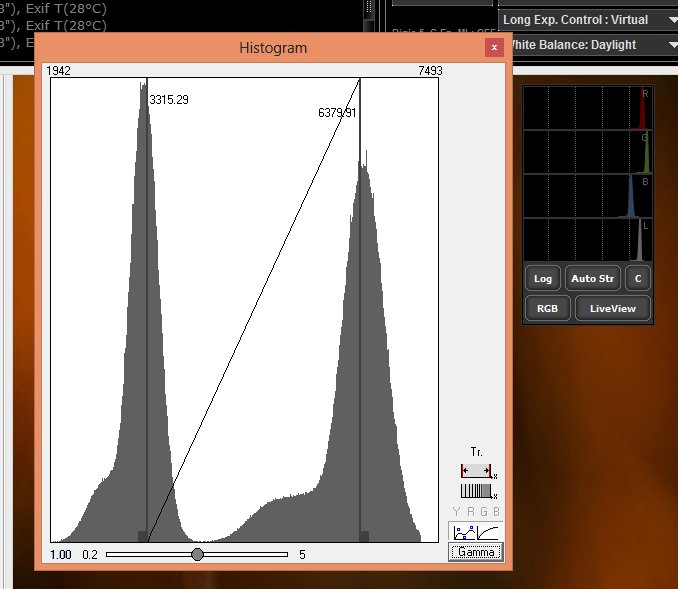
(Screendump with Fitswork and APT showing histograms) Here is a histogram that show how it looks when the light source's color balance is wrong between the red, green and blue. The left peak is the red and blue on top of each other, to the right is the green channel. The range for a 14-bit DSLR camera is about 14000 ADUs, you must from that subtract the bias, in my Canon it's 2048 ADU. You have then left 12000 ADU that you can use, I try to have the peak at 6000 ADU or 8000 to all three colors before subtraction of the bias. This was the best I could get with this RGB LED bulb, have to set it to white and then filter with a pink colored plastic film behind the diffuser. With a better control of the RGB lamps color I don't need this pink filter. It's normal that the green is the brightest color, but that's not what we need for these master flats. Notice the histogram to the right how much different it looks.
Update: Elecroluminescent:
This must be a perfect solution for a monochrome camera, but for a color camera there is no way to control the color balance. The T-shirt trick:I have also done some T-shirt trick calibrations, unexpected it works very well. 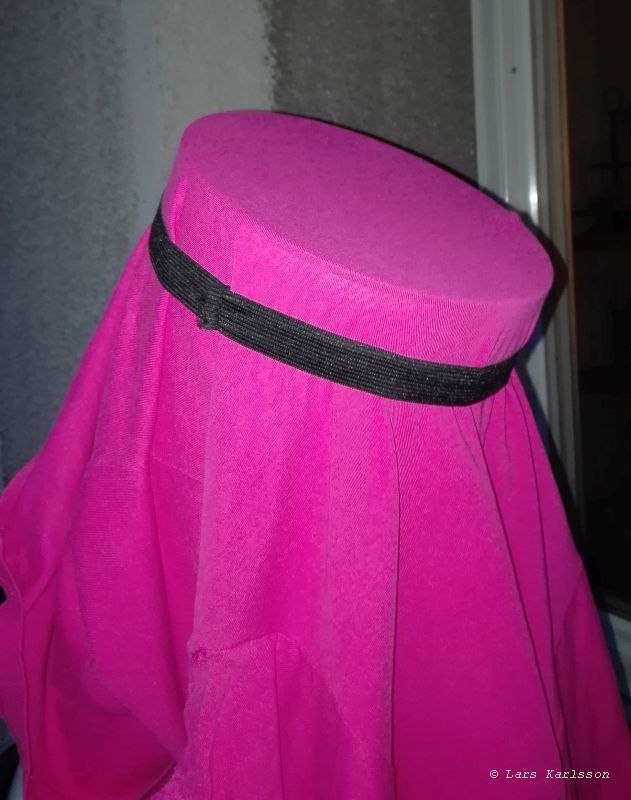
To get an even RGB levels I use a pink colored T-shirt and attach on the dew shield of the telescope. Even here it can be a problem with reflections from the the front lens of the telescope. Don't forget to set your focus were you normally have it. Point the telescope to the sky at dusk.
I continue this on my project page with another LED source which give me more control of the color and a flat design: Project Flat calibrator.
|
|